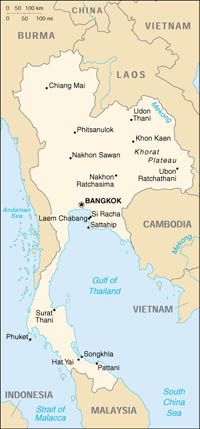| 1. Relations between Central and Local Governments in Thailand Democracy and decentralization are in vogue. Industrialized nations and international assistance organizations are encouraging developing countries to embrace reforms aimed at democratization and decentralization. Such reforms are being hyped as if they are a panacea for a host of problems. Anybody can shout slogans or spend hours arguing. What matters most is what happens at the ground level. Thailand is a highly centralized country, where the capital city holds a dominant position throughout society. Democratization began in the 1980s, and decentralization measures have been implemented at a brisk pace since the mid-1990s. Are we really seeing changes that foretell the advent of an age of local autonomy? Let us take an overview, using Chiangmai as an example.
TAMADA Yoshifumi |

